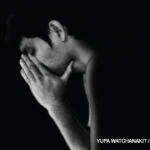NEW YORK (New York)—Patients with anxiety and depression may be less satisfied than other patients with their chronic low back pain (CLBP) treatments, new research suggests.
“Patients with anxiety/depression symptoms experienced more pain severity and more pain-related functional, social, and emotional disability, and they were less satisfied with care, compared with the other groups,” the authors write in Pain Management, online July 11.1
“Patients with CLBP have tremendous fears of loss of function. When there are no answers, they quickly become hopeless and feel very vulnerable. This leads to higher rates of depression and anxiety,” Dr. Lisa DeStefano, who was not involved in the study, tells Reuters Health by email.
“I hope that these findings help researchers understand the importance of defining and addressing the etiology of low back pain. This would eliminate/address the exacerbations and will diminish the anxiety and depression that is inherent in CLBP,” adds Dr. DeStefano, who chairs the Department of Osteopathic Manipulative Medicine at Michigan State University College of Osteopathic Medicine in East Lansing.
Dr. Luis Filipe Ribeiro de Azevedo of the University of Porto, Portugal, and colleagues examined baseline and one-year follow-up data collected by four pain clinics from patients who participated in a large observational, prospective cohort study.
The 284 adult patients with CLBP with radiculopathy averaged around 60 years of age and were at their first pain clinic consultation. Patients with cancer pain, psychiatric or cognitive disorders that might affect data collection and those unable to communicate in Portuguese were excluded.
In an in-person interview at baseline, participants provided details of their sociodemographics, medical comorbidities, and pain coping strategies, and the researchers extracted data from the clinical chart. The patients were interviewed again by telephone one year later.
Anxiety and depression symptoms were evaluated using the Hospital Anxiety and Depression Scale (HADS), and outcomes were assessed using the Brief Pain Inventory (BPI) and the Shortened Treatment Outcomes in Pain Survey (S-TOPS). The authors used linear mixed effects models to assess the impact of anxiety and depression and their interactions on treatment outcomes.
At one year, the 146 patients with both anxiety and depression experienced higher pain severity (P<0.001) and interference (P=0.013) in the BPI, compared with the 61 patients with anxiety only, the 19 with depression only, or the 58 with no symptoms. In the S-TOPS, their pain-related upper-body disability was significantly higher (P<0.001), and their satisfaction with care and with outcomes was significantly lower (P<0.001 for both).
